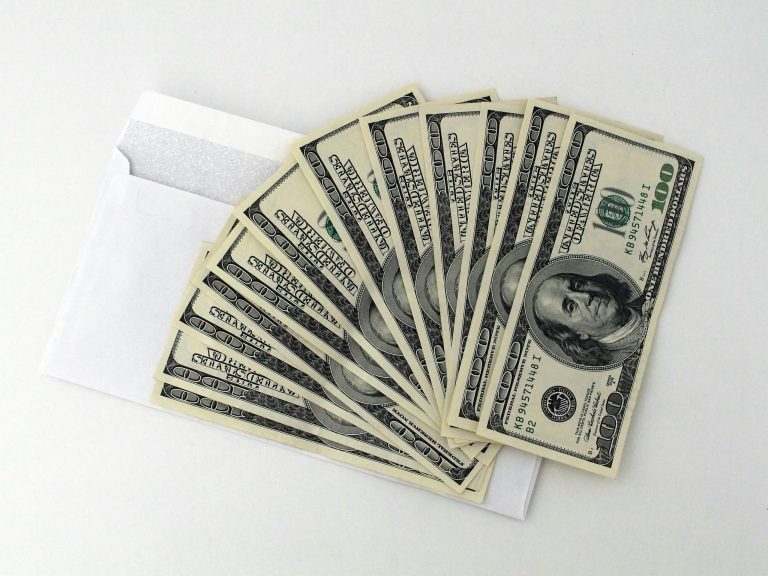In a world run by digital wallets, budgeting apps, and automatic transfers, you’d think the idea of stuffing envelopes with cash would be long gone. But in 2025, the old-school practice known as cash stuffing is trending again, and news flash: it’s not just among budgeting enthusiasts. A growing number of Americans, particularly younger generations like Gen Z and Millennials, are embracing this tactile, visual method of money management in response to growing economic anxiety and digital overload.
Cash stuffing might seem simple, even outdated, but its effectiveness is what’s turning it into a personal finance comeback story.
What Is Cash Stuffing, Exactly?
Cash stuffing is a physical budgeting method rooted in the envelope system, popularized decades ago by financial experts like Dave Ramsey. The concept is straightforward: you allocate your income into labeled envelopes (or folders, binders, or wallets), each designated for a specific spending category. Think groceries, gas, fun money, dining out, or savings.
Once the cash in an envelope runs out, that’s it. No dipping into other categories or swiping a card to make up the difference. It’s an approach that puts physical limits on spending and forces mindfulness with every dollar.
In today’s terms, it’s budgeting without the screen. And for a generation raised on subscriptions and one-click purchases, that tactile reality is exactly what makes it so appealing.
Why Is Cash Stuffing Trending in 2025?
The return of cash stuffing isn’t just a quirky trend. It’s a response to a real shift in the way people are thinking about money.
1. Digital fatigue is real.
Many people are overwhelmed by budgeting apps, subscription alerts, and the never-ending swirl of auto-pay notifications. Cash stuffing provides a break from the screen and offers a more grounded, hands-on experience. It slows things down, which is the point.
2. Inflation and economic instability.
With inflation still lingering and the cost of living remaining high in many areas, people are tightening their budgets. Cash stuffing provides a way to truly feel where your money is going. It’s a level of awareness that even the best budgeting apps can’t quite match.
3. Viral influence and aesthetic appeal.
Social media has played a major role in the resurgence of cash stuffing. Platforms like TikTok and YouTube are filled with creators who share their weekly stuffing routines, complete with pastel envelopes, gold-labeled binders, and motivational trackers. It’s budgeting, but make it cute, and it’s that visual appeal that draws people in.
4. Tangible progress motivates.
Watching cash physically accumulate in a “vacation” or “emergency fund” envelope gives many people a greater sense of satisfaction than seeing a number on a screen. It becomes a habit built on reward and visibility, making the journey to saving more enjoyable and sustainable.
Who Is Using Cash Stuffing in 2025?
While anyone can benefit from cash stuffing, its recent rise is largely thanks to Gen Z. As this generation enters the workforce, deals with student debt, and navigates uncertain housing markets, they’re turning to practical, back-to-basics financial tools to stay afloat and stay in control.
But Millennials and even some Gen Xers are on board, too. Many people who grew up with digital money are now realizing that physical cash can help reset bad habits. They’re tired of over-drafting or forgetting about those $8.99 streaming charges that pile up. Cash stuffing offers a sense of intentionality that’s hard to replicate with a tap or swipe.
The Benefits of Going Analog
Cash stuffing isn’t just trendy. It really does work. Here are some of the biggest benefits people are seeing in 2025:
-
Better control over spending: When you can see and touch your money, you’re far less likely to overspend.
-
Reduced impulse purchases: It’s harder to buy something spontaneously if you literally don’t have the cash for it in the right envelope.
-
Helps with budgeting discipline: The physical act of dividing money reinforces habits that stick.
-
Easy to start and maintain: No downloads or learning curves—just envelopes and a plan.
It’s not a miracle solution, but for many people, it’s the first budgeting method that’s actually stuck.
Downsides to Consider
Cash stuffing isn’t perfect. There are limitations and risks that come with relying heavily on physical cash:
-
It’s not ideal for online purchases.
-
Carrying large amounts of cash poses security concerns.
-
It doesn’t build credit or integrate with digital finance systems.
That said, many people use a hybrid approach, aka stuffing cash for daily spending categories, while handling bills and online purchases through traditional bank accounts or cards. The point isn’t to reject all digital tools but to use analog methods to reinforce awareness and control.
How to Start Cash Stuffing
Getting started with cash stuffing doesn’t require much:
-
Break down your income into categories.
-
Decide how much money should go into each.
-
Withdraw cash from the bank.
-
Use labeled envelopes, folders, or a cash binder to store each category.
-
Stick to the limits you’ve set.
There are countless templates and systems online, but even a simple DIY setup using mailing envelopes can get you going. Some people decorate theirs with stickers and quotes, turning the process into a mini ritual each week.
The Emotional Side of Cash Stuffing
What’s perhaps most surprising about cash stuffing is how emotional it can be. For people with financial anxiety, cash stuffing offers a sense of peace and control. For those who have struggled with overspending or debt, it’s a way to reconnect with money in a non-intimidating, even empowering way.
There’s a comfort in seeing where your money is going and knowing you’re in charge. In a time when so much feels uncertain, that sense of autonomy is priceless.
What about you?
Have you tried cash stuffing, or are you thinking about starting? What budgeting method works best for you in 2025?
Read More:
9 Awesome Side Hustles To Make You Extra Cash
5 Roadblocks to a Cashless Society
Read the full article here








